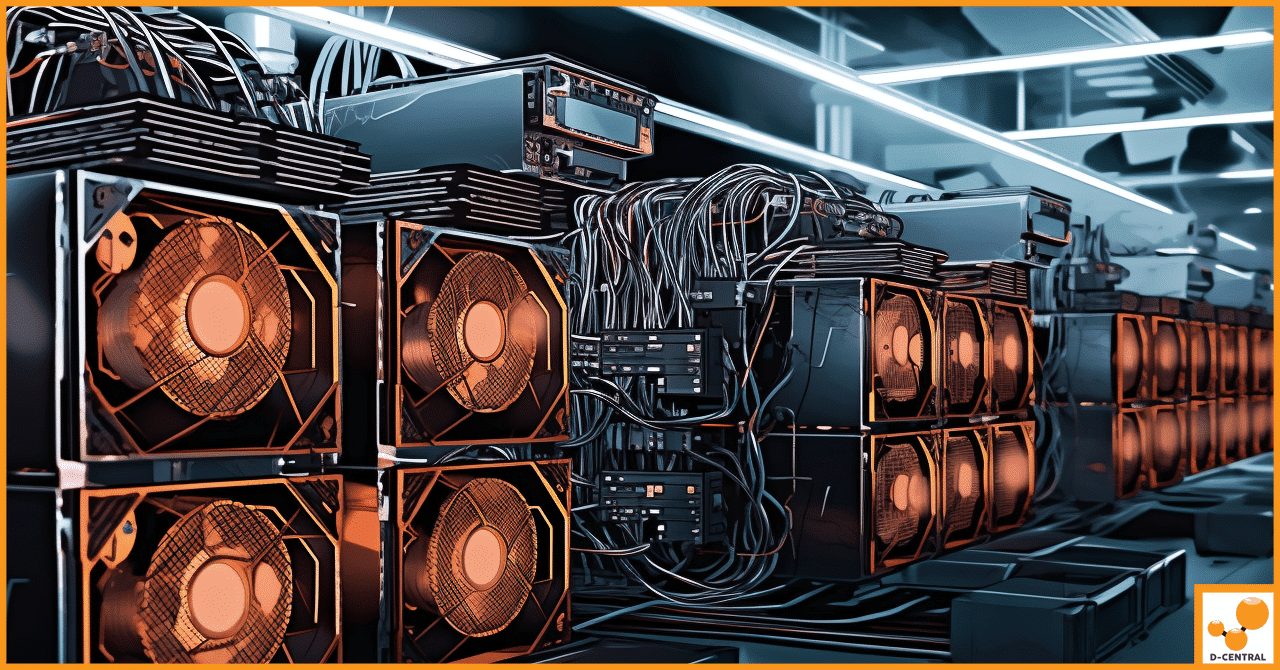
Behind Bitcoin: Understanding the Mechanics of Proof of Work
In the ever-evolving landscape of digital currencies, Proof of Work (PoW) stands as a cornerstone, underpinning the very essence of
4479 Desserte Nord Autoroute 440, Laval, QC H7P 6E2

Bitcoin is created and secured by mining, which involves solving complex mathematical puzzles using powerful computers. This process consumes a lot of electricity and generates heat as a byproduct. Bitcoin’s annual energy consumption is estimated to be more than many countries, such as Argentina or Norway. This raises serious environmental concerns, as most of the electricity used for mining comes from fossil fuels, which contribute to greenhouse gas emissions and climate change.
However, what if there was a way to reuse the heat generated by Bitcoin mining for a good cause? What if this heat could power Research and Development Facilities where scientific or technological research and innovation occur? Research and Development Facilities require heating for various reasons, such as maintaining a comfortable indoor temperature, providing hot water, or supporting certain experiments or processes. By redirecting the excess heat from Bitcoin mining to these facilities, miners and researchers could benefit from lower heating costs, reduced carbon footprint, and increased revenue streams. Moreover, this could create a synergy between the cryptocurrency industry and the scientific community, fostering collaboration and innovation on green technologies and solutions.
In this article, we will explore how Bitcoin mining heat can be reused for Research and Development Facilities and the benefits and challenges of doing so. We will also provide some examples of existing or potential projects that use Bitcoin mining heat for Research and development facilities worldwide.
Research and Development Facilities are places where scientific or technological research and innovation occur. They can be found in various sectors, such as academia, industry, government, or non-governmental organizations. Research and Development Facilities can range from small laboratories to large complexes, depending on the type and scale of the research activities.
Research and Development Facilities need heating for various reasons, depending on their specific functions and needs. Some of the common reasons are:
Heating is usually one of the major operating costs for Research and Development Facilities, as it can consume significant energy. The source and type of heating can also affect the environmental impact of the facilities, as some heating methods can produce greenhouse gas emissions or other pollutants. Therefore, finding a cheap, reliable, and clean heating source is a challenge and an opportunity for Research and Development Facilities.
Bitcoin mining heat can be used for Research and Development Facilities by redirecting the excess heat from the mining equipment to the facilities using various technologies and methods. The basic principle is to capture the heat from the mining machines and transfer it to the heating systems of the facilities, either directly or indirectly.
There are different ways to capture and transfer the heat from Bitcoin mining, depending on the type and location of the mining equipment and the heating systems. Some of the common methods are:
Some examples of existing or potential projects that use Bitcoin mining heat for Research and Development Facilities are:
Using Bitcoin mining heat for Research and Development Facilities can have several advantages, both for the miners and the researchers, as well as for the environment and society. Some of the main advantages are:
Using Bitcoin mining heat for Research and Development Facilities can also have some challenges and risks, both for the miners and the researchers, as well as for the environment and society. Some of the main challenges and risks are:
In this article, we have explored how Bitcoin mining heat can be reused for Research and Development Facilities and what are the benefits and challenges of doing so. We have also provided some examples of existing or potential projects that use Bitcoin mining heat for Research and development facilities worldwide.
We have learned that Bitcoin mining is a process that consumes a lot of electricity and generates a lot of heat as a byproduct. This heat is usually wasted and contributes to greenhouse gas emissions and climate change. However, some innovative Bitcoin miners have found ways to redirect the excess heat to Research and Development Facilities, where scientific or technological research and innovation occur. These facilities need heating for various reasons, such as maintaining a comfortable indoor temperature, providing hot water, or supporting certain experiments or processes.
Miners and researchers can benefit from lower heating costs, reduced carbon footprint, and increased revenue streams by using Bitcoin mining heat for Research and Development Facilities. Moreover, this can foster collaboration and innovation between the cryptocurrency industry and the scientific community and support the development of green technologies and solutions.
However, using Bitcoin mining heat for Research and Development Facilities also involves some challenges and risks, such as matching the heat demand and supply, ensuring the quality and reliability of the heat, complying with the safety and regulatory standards, and dealing with the volatility and uncertainty of the bitcoin market. These challenges and risks require technical and logistical adjustments, monitoring and maintenance, compliance and reporting, and risk management and planning.
We hope this article has given you a better understanding of how Bitcoin mining heat can be used for Research and Development Facilities and the advantages and disadvantages of doing so.
Q: What are Research and Development Facilities, and why do they need heating?
A: Research and Development Facilities are places where scientific or technological research and innovation occur. They can be found in various sectors, such as academia, industry, government, or non-governmental organizations. These facilities can range from small laboratories to large complexes, depending on the type and scale of the research activities. They need heating for various reasons, like maintaining a comfortable indoor temperature, providing hot water, supporting certain experiments or processes, growing plants or animals, and producing steam or hot air for power generation or mechanical work.
Q: How can Bitcoin mining heat be used for Research and Development Facilities?
A: Bitcoin mining heat can be used for Research and Development Facilities by redirecting the excess heat from the mining equipment to the facilities using various technologies and methods. There are different ways to capture and transfer the heat from Bitcoin mining, like air cooling, liquid cooling, and immersion cooling. Some examples of existing or potential projects that use Bitcoin mining heat for Research and Development Facilities are MintGreen, Genesis Mining, Heatmine, Sato, and Lancium.
Q: What are the advantages of using Bitcoin mining heat for Research and Development Facilities?
A: Using Bitcoin mining heat for Research and Development Facilities can have several advantages like lowering heating costs, reducing carbon footprint, creating additional revenue streams, and fostering collaboration and innovation between the cryptocurrency industry and the scientific community.
Q: What are the challenges and risks of using Bitcoin mining heat for Research and Development Facilities?
A: Using Bitcoin mining heat for Research and Development Facilities can have some challenges and risks, like matching the heat demand and supply, ensuring the quality and reliability of the heat, complying with the safety and regulatory standards, and dealing with the volatility and uncertainty of the Bitcoin market. These challenges and risks require technical and logistical adjustments, monitoring and maintenance, compliance and reporting, and risk management and planning.
DISCLAIMER: D-Central Technologies and its associated content, including this blog, do not serve as financial advisors or official investment advisors. The insights and opinions shared here or by any guests featured in our content are provided purely for informational and educational purposes. Such communications should not be interpreted as financial, investment, legal, tax, or any form of specific advice. We are committed to advancing the knowledge and understanding of Bitcoin and its potential impact on society. However, we urge our community to proceed with caution and informed judgment in all related endeavors.
Related Posts

In the ever-evolving landscape of digital currencies, Proof of Work (PoW) stands as a cornerstone, underpinning the very essence of

In today’s digital age, streaming services have become the cornerstone of entertainment, offering an unprecedented library of movies, TV shows,

Bitcoin mining, the backbone of the cryptocurrency ecosystem, serves a dual purpose: it secures the blockchain by validating transactions and,